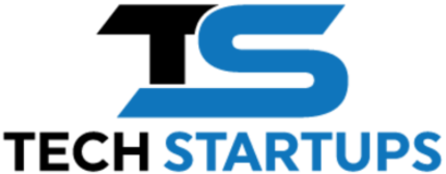The hidden risk of .AI domains: How a small naming choice can damage your brand identity, security, and a startup’s future

Over the past few years, .AI domains have exploded in popularity. What started as a quirky country-code extension for Anguilla has turned into one of the hottest digital assets on the internet. By late 2024, there were more than half a million active .AI registrations — a staggering jump from fewer than 80,000 just two years earlier. The frenzy was so intense that Anguilla reportedly generated more than $30 million in annual revenue from registrations alone, a figure that rivals tech startup valuations more than it does small-island budgets.
Founders have embraced .AI domains as a shortcut to credibility. It signals where the company belongs, what space it plays in, and what technology drives it. But beneath this shiny new trend is a blind spot: the same dot that signals innovation can quietly erode a brand’s identity, weaken legal defensibility, and expose founders to cybersecurity threats that most never see coming.
The risk is far bigger than naming confusion. It reaches into brand integrity, email deliverability, phishing, malware, and long-term control of your company’s public-facing identity. And for many startups, the danger shows up only when it’s too late.
OpenAI Is Not “Open AI”: A Lesson in How One Space Can Reshape a Brand
Most founders still underestimate how fragile a brand becomes when tiny variations — a dot, a space, or even a TLD — influence how the public interprets a name. The OpenAI trademark case is the clearest proof.
In July 2025, a U.S. District Court judge granted summary judgment in favor of OpenAI (no space) in a dispute with a smaller company calling itself Open Artificial Intelligence Inc., which operated under the name “Open AI” and used the domain open.ai. What looked like a minor spacing difference was central to the case.
OpenAI argued that the spaced version of the name and the open.ai domain created a false association with its far more visible brand, especially after the success of ChatGPT and DALL·E 2. The court agreed. In her order, Judge Yvonne Gonzalez Rogers found that:
-
The “Open AI” trademark wasn’t valid. The court concluded that founder Guy Ravine intended to deceive the US Patent and Trademark Office by submitting proof of a product that didn’t actually exist at the time of the application.
-
There was clear risk of confusion. By late 2022, OpenAI had built significant public recognition under its name. The similarity between “OpenAI” and “Open AI,” combined with use of open.ai, was likely to mislead users.
-
The smaller company drifted into OpenAI’s market. Although Open AI had registered the domain earlier, it later expanded into AI tools after OpenAI had already secured rights in the name, putting the brands on a direct collision course.
The outcome was decisive. The judge:
-
Cancelled the “Open AI” federal trademark registration
-
Permanently barred the company and its founder from using “Open AI” and similar marks
The court also ruled that the “OAI founder meant to deceive the patent office.” OpenAI later said it was grateful for the ruling because it helps “protect the OpenAI name and avoid confusion” for its users.
“OpenAI Inc. won its lawsuit against similarly-named Open Artificial Intelligence Inc., convincing a federal judge to cancel OAI’s trademark registration for “Open AI”—with a space—and rule the company infringed the AI behemoth’s moniker,” Bloomberg reported.
In the end, one space was enough for a federal court to shut down an entire brand.
And this is exactly the trap founders walk into when they rely on a .AI domain as their primary identity. Operating as BrandName.ai often leads the public to reinterpret the name as BrandName AI — a generic descriptor rather than a unique identity. Journalists, investors, and customers begin using the two versions interchangeably. Over time, the brand splits into two identities: the one you intended and the one the market assumes is correct.
That drift makes the brand harder to defend. If someone else trademarks BrandNameAI, the ambiguity introduced by your .AI domain can weaken your legal position — the same sort of ambiguity that proved costly in the OpenAI case.
Why .AI Domains Create Built-In Ambiguity
A .AI domain looks modern on the surface, but it introduces a naming issue most founders don’t discover until the brand is already in circulation. The dot encourages the market to split your identity in two — the name you intended and the name people assume you meant. That gap becomes harder to close as your visibility grows.
Unlike .com — which reinforces the name exactly as it appears — .AI introduces an interpretive layer. The dot becomes a dividing line:
BrandName.Ai → “BrandName”
Some people drop the extension altogether, referring to you simply by the root word.
BrandName.Ai → “BrandName AI”
Others treat the dot as a separator, turning the name into a descriptor.
This inconsistency creates:
-
Mixed press coverage
-
Confusing investor materials
-
Brand dilution
-
Trademark complications
-
Long-term identity drift
And that’s the problem: a brand is only as strong as how consistently the market uses it.
From .AI to .Com: The Quiet Shift Back to .COM and What It Signals

The risks around .AI domains aren’t just academic. Over the past two years, a quiet rebrand trend has begun to spread across the startup ecosystem. Early-stage companies that launched with .AI domains are now shifting back to .Com as they grow into larger markets.
Some of the most visible examples include:
Confirmed .AI → .COM Rebrands
-
Scale: Scale.ai → Scale.com
-
Modular: Modular.ai → Modular.com
-
Runway: Runway.ai → RunwayML.com
-
Pymetrics: Pymetrics.ai → Pymetrics.com
-
Pickle: GetPickle.ai → Pickle.com
-
Mentessa: Mentessa.ai → Mentessa.com
These aren’t cosmetic changes. They reflect a shared realization:
.AI is great for signaling what you do, but .COM is better for signaling who you are.
- Enterprise buyers trust it more.
- Mainstream users recognize it instantly.
- Email deliverability improves.
- And the brand escapes the narrow perception of being “just another AI startup.”
Meanwhile, some companies are still sticking with .AI — and doing so successfully. Perplexity.ai, Character.ai, Stability.ai, and Hume.ai continue to lean into the extension because it reinforces their identity and product story. Others, like xAI, use both: x.ai for the company and grok.com for the product.
These decisions reflect broader brand intentions. For early-stage teams, .AI can be a helpful signal. But for companies with long-term ambitions — especially those expanding beyond a niche — the pull of .COM becomes hard to ignore.
The Branding Spectrum: Unique vs. Generic
Every startup name falls somewhere along this spectrum:
Unique, One-Word Brands
OpenAI, Stripe, Shopify
These names stand alone. Nobody confuses “Stripe” with “Stripe Payments.”
Descriptive, Two-Word Brands
Stability AI, Figure AI
Clear but less distinctive. “AI” functions as a descriptive bolt-on.
Generic Brands Using .AI Domains
Perplexity.Ai, Runway.ai
Can be read as Perplexity or Perplexity AI, Runway or Runway AI. The dot creates uncertainty.
Founders often don’t realize that ambiguity forces the market to fill in the blanks — and the market is rarely consistent.
Lessons From How Top AI Labs Name Themselves
The leading AI labs didn’t land on their names by accident. OpenAI, for instance — now the world’s most valuable AI company — anchors its identity on a .com domain, not a .ai. These choices reflect deliberate thinking about identity, distinctiveness, and long-term positioning. When you study how these labs present themselves, a pattern emerges — one that shows why some brands stay memorable while others slip into the noise.
A pattern emerges when you look closely:
Figure
Officially “Figure.” Uses “Figure AI” only when needed, but never merges it into FigureAI.
Anthropic
Never calls itself “Anthropic AI,” even though it’s one of the most influential AI labs in the world.
Stability AI
Fully descriptive. It works but limits distinctiveness.
The strongest brands protect the purity of their name. They avoid built-in ambiguity. And they treat the domain as an address — not the identity.
The Overlooked Risks of .AI Domains — Beyond Branding Confusion
While naming ambiguity is the most obvious risk, it’s far from the only one. As .AI becomes more popular, it’s attracting attention from people who aren’t founders — but attackers.
1. Email Deliverability Problems
Some email providers treat .AI more cautiously because of increased spam originating from newer TLDs. Legitimate emails can land in spam unless your security setup is flawless.
2. Investment Volatility
Many .AI domains are bought purely for speculation. Prices swing wildly. Founders often overpay for a name that might not hold value long-term.
3. Brand Impersonation and Typosquatting
Attackers routinely register lookalike .AI domains to impersonate well-known companies.
Example:
BrandName.com → BrandNarne.ai (with an “rn” that looks like “m”)
You can imagine the damage.
4. A Lack of Ownership for Major Brands
Many established companies don’t own their .AI domains, leaving room for malicious registrations that confuse customers or redirect traffic to scams.
Why Cybercriminals Love .AI Domains
The rise of .AI domains hasn’t gone unnoticed by cybercriminals. As legitimate companies adopt the extension, attackers have seized the opportunity to blend in, exploit trust, and launch increasingly sophisticated campaigns. The result is a growing wave of phishing, malware, and impersonation schemes built around the credibility the AI industry has earned. The hype around artificial intelligence makes .AI feel trustworthy. Cybercriminals weaponize this perception.
Phishing & Scams
Attackers use .AI domains to run phishing campaigns that appear more legitimate to unsuspecting users.
Malware Distribution
Bad actors host malware or redirect victims through .AI links because they seem credible at first glance.
AI-Enhanced Attacks
Attackers now use AI to generate:
-
convincing phishing emails
-
realistic landing pages
-
automated “disposable” domain registrations
The scale of these attacks is increasing — and the .AI extension is a prime tool in the arsenal.
Data & Privacy Risks
When companies use unvetted AI tools or third-party AI systems linked to .AI domains, sensitive data can be exposed through shadow AI usage.
In other words, the risk is not hypothetical. It’s active.
How Founders Can Reduce the Risks of Using a .AI Domain
Using a .AI domain is workable, but only if founders treat it with intention. The risks multiply when guardrails are ignored, and the consequences often show up at the worst possible time — during fundraising, press coverage, or a security incident. The strategies below help minimize those weak points and keep the brand in control.
A .AI domain isn’t inherently bad — but it requires more protection and more intentional branding.
1. Implement SPF, DKIM, and DMARC
These are non-negotiable if you want to avoid email deliverability issues.
2. Secure Trademark Variants Early
If your brand could be misread as BrandName AI, secure that name before someone else does.
3. Monitor Lookalike Domains
Track new .AI registrations that resemble your brand.
4. Use Security Tools and DNS Filtering
Block known malicious .AI domains and protect employees from phishing attempts.
5. Treat .AI as Optional — Not Foundational
Use BrandName.com as your core identity whenever possible.
Use BrandName.ai as a redirect, marketing alias, or product-specific domain — not as the brand itself.
6. Educate Employees and Customers
Phishing awareness, deepfake awareness, and responsible AI usage matter more now than ever.
These steps dramatically reduce both branding and cybersecurity risk.
Conclusion
The excitement around .AI domains isn’t slowing down. With prices climbing into the six-figure range and more than half a million registrations already in circulation, founders are rushing to stake their claim in what feels like digital prime real estate.
But the dot that signals innovation also introduces confusion, legal exposure, cybersecurity vulnerabilities, and operational friction. A single spacing difference forced a real company to defend its identity in court. A single dot can split a brand into two interpretations. And a single poorly secured .AI domain can turn into a gateway for phishing, impersonation, or malware.
The lesson is simple:
Your domain is an address — not your identity.
Protect the brand first. Use the domain strategically. And never let shorthand convenience dictate the long-term integrity of your company’s name, reputation, or security.
And there’s one final signal worth paying attention to: OpenAI — the most valuable AI company on the planet — still anchors its global identity on OpenAI.com, not OpenAI.ai or Open.AI.
That choice sends a message to every founder and every brand strategist in the industry:
-
Real AI companies graduate to .com.
-
.AI is a trend. .COM is a foundation.
-
AI is the product. .COM is the company.




